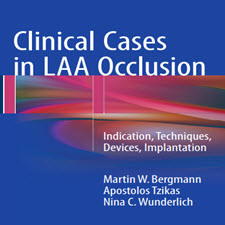Urolithiasis in Clinical Practice
ABSTRACT
Humans are afflicted by the urinary stone disease since the dawn of time. Today this ailment is considered as the third most frequent urological pathological condition after infections and prostatic diseases, and statistics show a worldwide increase in its incidence and prevalence. In 1994 data from the US National Health and Nutrition Examination Survey (NHANES) estimated the prevalence of stone disease at 5.2% of the American population, marking a significant increase compared to the year 1980 when a prevalence of only 3.2% has been observed . A more recent study performed in 2010 suggested a further increase reaching 8.8% prevalence, roughly equivalent to 1 in 11 people . The same trends have been observed all over the world and the highest prevalence of urinary stones was reported in Saudi Arabia with an estimated value of 20% . Inexorably, urolithiasis treatment costs have dramatically increased and constitute a heavy economic burden today. In the United States alone, urinary stones have caused two million outpatient visits in the year 2000, corresponding to a 40% increase compared to 1994 .
INTRODUCTION
“Calculus” is a Latin word meaning “small pebble”. It is the diminutive form of calx (genitive: calcis) which means limestone or chalk. Pebbles were used in the Antiquity and Middle-age for counting of goods, animals, and slaves (Fig. 2.1). By synecdoche, the use of the word calculus progressed to refer to the whole counting operation as well as to more complex mathematical analyses. In 1901, the English Archaeologist Elliott Smith discovered a stone in the pelvis of a mummy preserved inside a prehistoric Egyptian tomb. C14-isotope studies helped dating the mummy at 4800 BC . Since then paleopathology has revealed many other prehistoric and ancient cases of stone disease in various continents of the globe (Table 2.1). Stone disease has been described in all civilizations throughout the antiquity, including India, China, Persia, Greece, and Rome, as well as in the medieval European and Islamic period.
چکیده
از زمان سپیده دم، انسانها از بیماری بیماری ادراری آسیب می بینند. امروزه این بیماری بعنوان سومین بیماری پاتولوژیک اورولوژیک بعد از عفونت و بیماریهای پروستات محسوب می شود و آمارها نشان می دهد که میزان بروز و شیوع آن در سراسر جهان افزایش یافته است. در سال 1994 داده های بررسی ملی بهداشت و تغذیه ایالات متحده (NHANES) میزان شیوع بیماری های سنگی را در 5.2٪ جمعیت آمریکا برآورد کرده اند که نشان دهنده افزایش قابل ملاحظه ای نسبت به سال 1980 است، در حالی که شیوع آن تنها 3.2٪ بوده است. یک مطالعه اخیر که در سال 2010 انجام شد، افزایش بیشتر را به میزان 8.8٪ رساند که تقریبا برابر با 1 در 11 نفر بود. همان روند در سراسر جهان مشاهده شده است و بیشترین میزان سنگ های ادراری در عربستان سعودی با ارزش تخمینی 20 درصد گزارش شده است. غیر قابل پیش بینی هزینه های درمان سنگ کلیوی امروزه افزایش چشمگیری داشته و بار اقتصادی سنگین را تشکیل می دهد. در ایالات متحده تنها سنگ های ادراری در سال 2000، دو میلیون بازدیدکننده داشته اند که مربوط به افزایش 40 درصدی نسبت به سال 1994 است.
مقدمه
Calculus “یک کلمه لاتین به معنی” سنگ ریزه کوچک “است. این فرم کوچک از کلسیم است که به معنی سنگ آهک یا گچ است. سنگ های قیمتی در عصر باستانی و میانه برای شمارش کالاها، حیوانات و بردگان مورد استفاده قرار گرفت (شکل 2.1). با استفاده از روش synecdoche، استفاده از word calculus پیشرفت کرد تا به کل عملیات شمارش و همچنین تجزیه و تحلیل پیچیده ریاضی اشاره کند. در سال 1901، الیوت اسمیت، باستان شناس انگلیسی، یک سنگ در لگن یک مومیایی که در داخل یک آرامگاه مصری مصر گذشت، کشف کرد. مطالعات ایزوتوپهای C14 کمک می کرد تا مومیایی را در 4800 قبل از میلاد ملاقات کند. از آن به بعد پیلوپاتولوژی بسیاری از موارد پیش از تاریخ و باستان را از بیماری های سنگی در قاره های مختلف جهان نشان می دهد (جدول 2.1). بیماری های سنگی در تمام تمدن ها در طول دوران باستان، از جمله هند، چین، ایران، یونان و رم و همچنین در دوره قرون وسطی اروپا و اسلامی، شرح داده شده است.
Year: 2016
Publisher: SPRINGER
By : Said Abdallah Al-Mamari
File Information: English Language/ 309 Page / size: 10.09 MB
سال : 1395
ناشر : SPRINGER
کاری از : سعید عبدالله المامری
اطلاعات فایل : زبان انگلیسی / 309 صفحه / حجم : MB 10.09


![Urolithiasis.in.Clinical.Practice.[taliem.ir]](https://taliem.ir/wp-content/uploads/Urolithiasis.in_.Clinical.Practice.taliem.ir_.jpg)
![Chest.Drains.in.Daily.[taliem.ir] Chest.Drains.in.Daily.[taliem.ir]](https://taliem.ir/wp-content/uploads/Chest.Drains.in_.Daily_.taliem.ir_.jpg)
![Bariatric.Surgical.Practice.Guide.Recommendations.2017.[taliem.ir] Bariatric.Surgical.Practice.Guide.Recommendations.2017.[taliem.ir]](https://taliem.ir/wp-content/uploads/Bariatric.Surgical.Practice.Guide_.Recommendations.2017.taliem.ir_.jpg)
![Seizures.in.Critical.Care.A.Guide.to.Diagnosis.[taliem.ir] Seizures.in.Critical.Care.A.Guide.to.Diagnosis.[taliem.ir]](https://taliem.ir/wp-content/uploads/Seizures.in_.Critical.Care_.A.Guide_.to_.Diagnosis.taliem.ir_.jpg)

![Person-Centred.Practice.in.Nursing.[taliem.ir] Person-Centred.Practice.in.Nursing.[taliem.ir]](https://taliem.ir/wp-content/uploads/Person-Centred.Practice.in_.Nursing.taliem.ir_.jpg)
![Principles.and.Practice.of.Urooncology.[taliem.ir] Principles.and.Practice.of.Urooncology.[taliem.ir]](https://taliem.ir/wp-content/uploads/Principles.and_.Practice.of_.Urooncology.taliem.ir_.jpg)
![Clinical Features of PTSD[taliem.ir] Clinical Features of PTSD[taliem.ir]](https://taliem.ir/wp-content/uploads/Clinical-Features-of-PTSDtaliem.ir_.jpg)
![Clinical[taliem.ir] Clinical[taliem.ir]](https://taliem.ir/wp-content/uploads/Clinicaltaliem.ir_.jpg)

![Tumors.of.the.Sacrum.Diagnosis.and.Treatment.[taliem.ir]](https://taliem.ir/wp-content/uploads/Tumors.of_.the_.Sacrum.Diagnosis.and_.Treatment.taliem.ir_-150x150.jpg)
![Vascular.Smooth.Muscle.(Structure.and.Function.[taliem.ir]](https://taliem.ir/wp-content/uploads/Vascular.Smooth.Muscle.Structure.and_.Function.taliem.ir_-150x150.jpg)
دیدگاه خود را ثبت کنید
تمایل دارید در گفتگو شرکت کنید؟نظری بدهید!